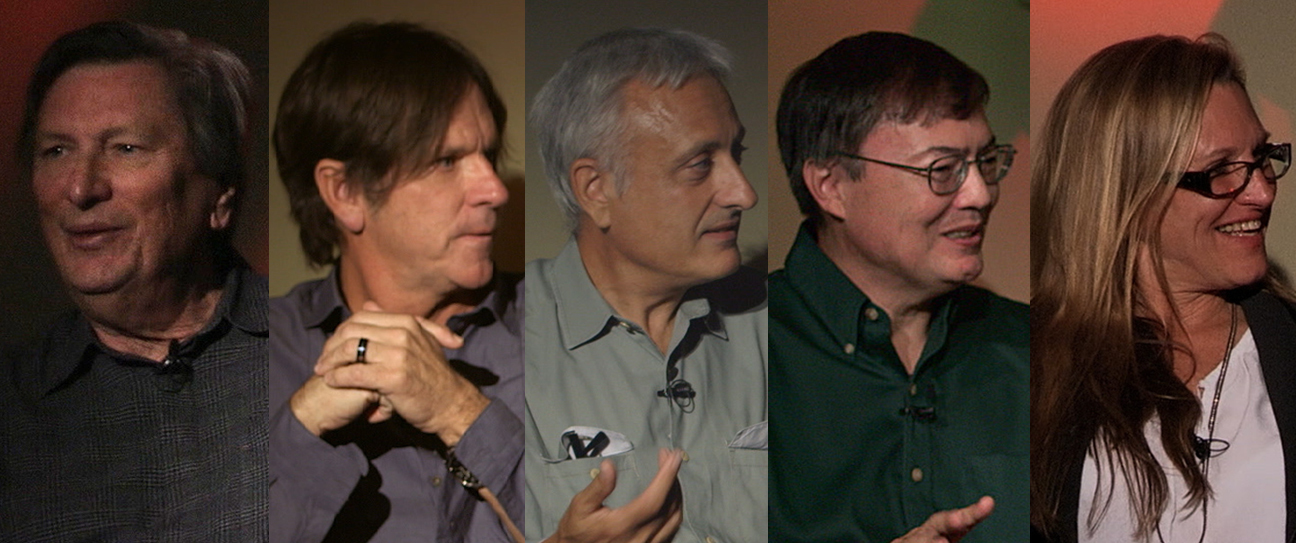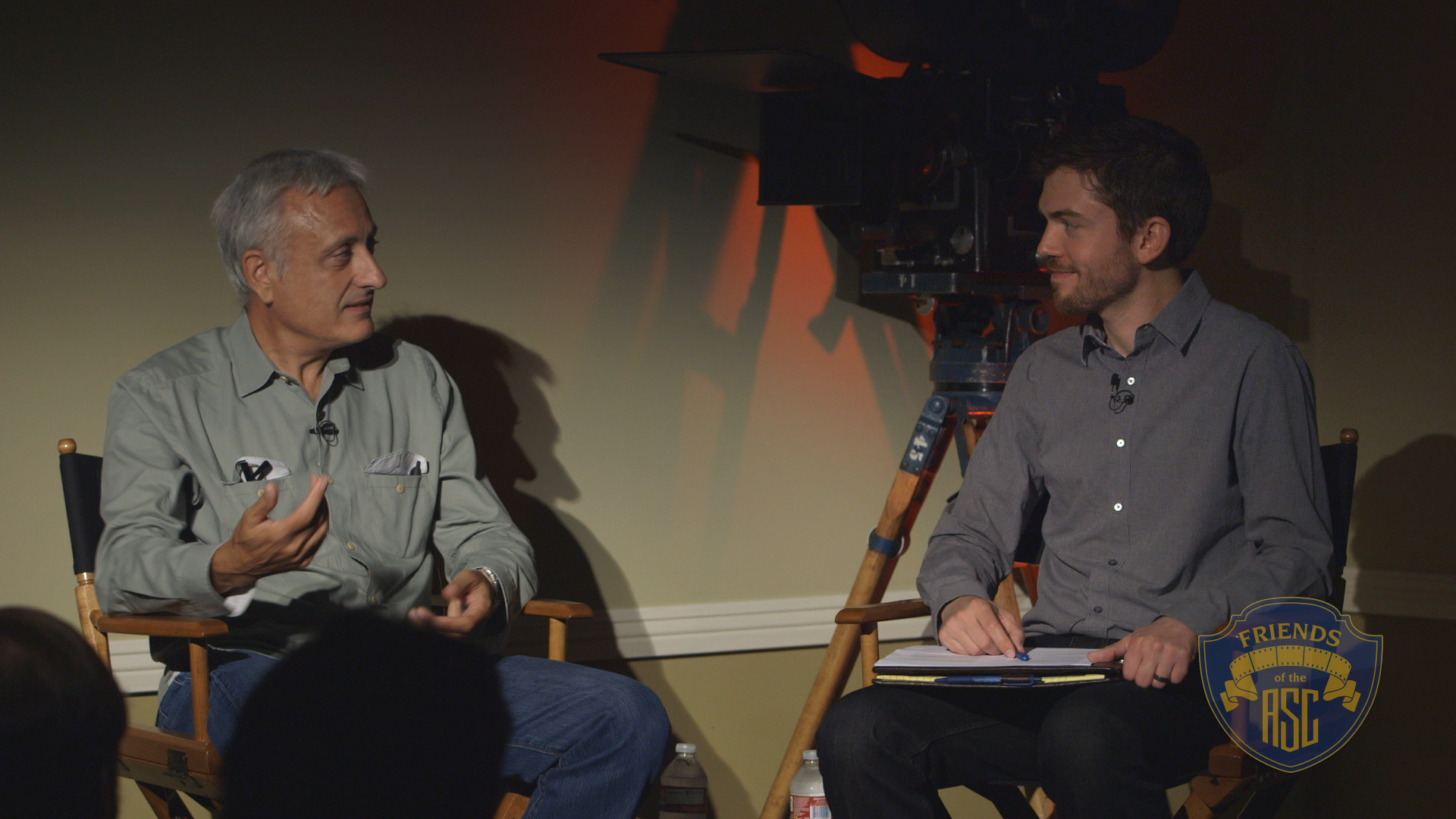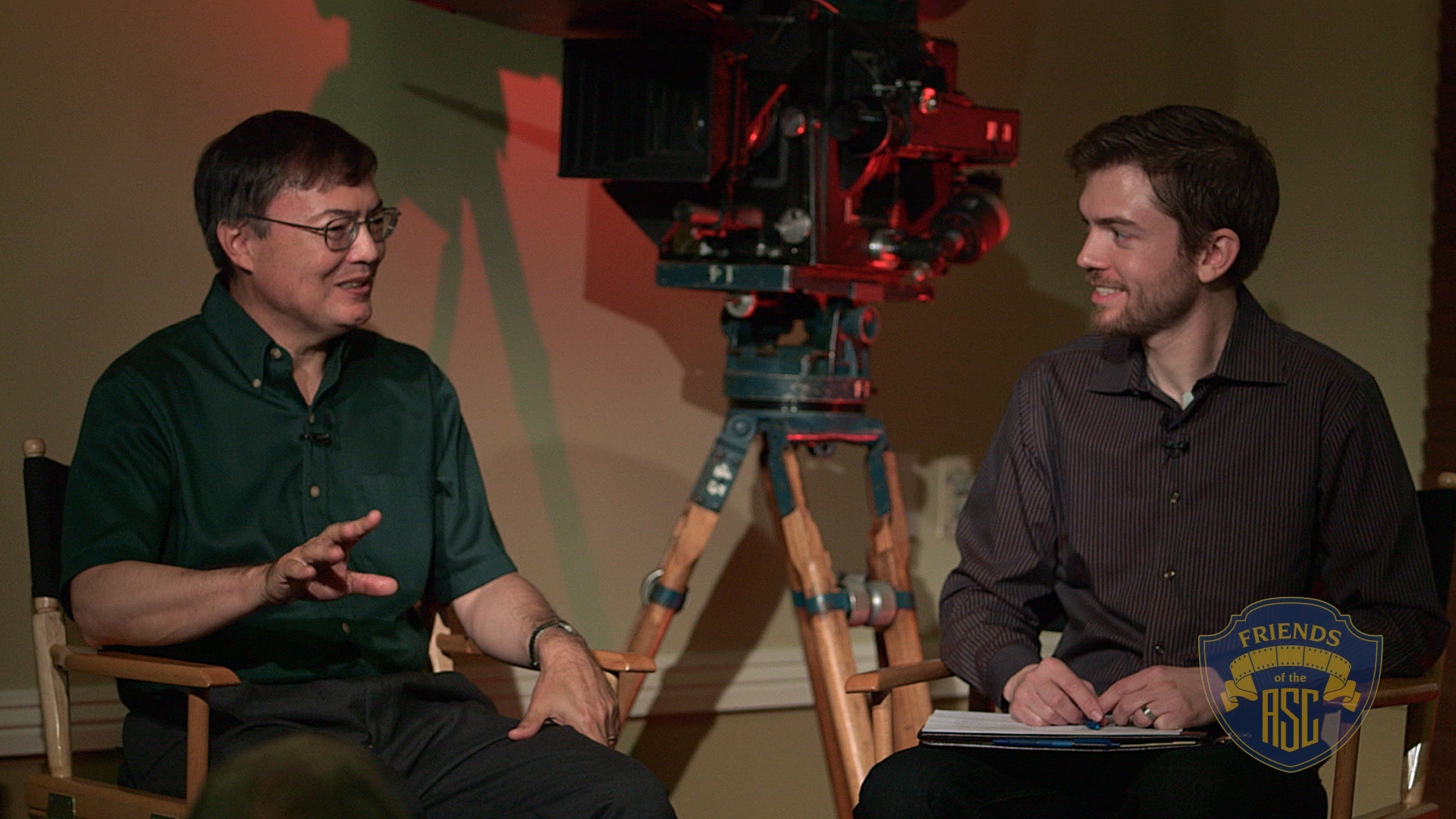
ASC Breakfast Club 2013 Video Collection
In-depth live interviews at the ASC clubhouse with ASC members Amelia Vincent, John Bailey, and M. David Mullen.
These videos are exclusive to Friends of the ASC.
In front of a live audience, ASC members share their inspirations and experiences while analyzing scenes from their own work and offering an informative look at their decision-making process and collaborative spirit. Sessions are moderated by American Cinematographer associate editor Jon D. Witmer, and are followed by question-and-answer sessions with the audience.
Breakfast Club 2013 participants: Amelia Vincent, ASC; John Bailey, ASC; and M. David Mullen, ASC.
Clubhouse Conversation 2013 participants: ASC members Dean Cundey, Michael Goi and Daniel Pearl in conversation about horror cinematography; and ASC members Christopher Baffa, Patrick Cady and William Webb in conversation about shooting one-hour episodic series.
Previous Collections
2020 | 2019 | 2018 | 2017 | 2016 | 2015 | 2014 | 2013 | 2012 | 2011

Bailey uses the opening shot of Jean-Luc Godard’s Contempt, photographed by Raoul Coutard, as a springboard for a discussion of the history and evolution of camera design and camera movement, traces some of the roots of the French New Wave to Italian Neorealism, and follows the films’ influence into Hollywood. Placing Gillo Pontecorvo’s The Battle of Algiers in its historical context, he enthuses over the film’s continuing impact on contemporary filmmakers even as modern aesthetic trends lean toward “chaos cinema.”
As a point of contrast to the modern emphasis on “image capture” and the shot as raw data, Bailey point to Béla Tarr’s Werckmeister Harmonies, a 145-minute movie that comprises only 39 shots. He offers an overview of the career of cinematographer Jack Cardiff, emphasizing the influence of painting on Cardiff’s work and citing examples of how specific paintings have also impacted his own cinematography.
- The Evolution of the Camera
- European Cinema's Impact on Hollywood
- The Battle of Algiers
- Slow Cinema
- 3-Strip Technicolor
- The Stylization of Mishima
- The Intimacy of Anamorphic
- Q & A
In an eclectic career, John Bailey, ASC has photographed such mainstream Hollywood films as Ordinary People, The Big Chill, Silverado, The Accidental Tourist, Groundhog Day, In the Line of Fire, As Good as It Gets, How to Lose a Guy in 10 Days, The Sisterhood of the Traveling Pants and Must Love Dogs; such offbeat films as Norman Mailer’s Tough Guys Don’t Dance and Jason Miller’s That Championship Season; and such genre-bending pictures as Swimming to Cambodia, A Brief History of Time and The Kid Stays in the Picture.

Cameron discusses his early cinematic influences, how he got into the union as a director of photography, and what he learned from shooting commercials for director Tony Scott, detailing the ways in which they tortured their film stock while shooting with an array of cameras. He recalls the challenges of his first foray into HD feature production, notes how digital workflows have advanced in the years since, and emphasizes that creativity should always trump technology. Opining that the choice of lenses separates one cinematographer from another, Cameron talks about his preference for the 2.40:1 aspect ratio and anamorphic lenses in particular.
- Be Interesting and Be Interested
- Collaborating with Tony Scott
- Collateral and Digital Imaging
- Total Recall
- Q&A 1
- Q&A 2
Born in Montreal, Quebec, Paul Cameron, ASC launched his career in commercials and music videos, and he credits this experience with helping to develop the distinctive imagery that can be seen in the features Gone in 60 Seconds and Swordfish, directed by Dominic Sena, and Man on Fire and Deja Vu, directed by Tony Scott. His work on Michael Mann’s Collateral earned him an ASC Award nomination and a BAFTA Award for best cinematography (shared with co-cinematographer Dion Beebe, ASC, ACS). In 2003, he took top cinematography honors at The Clio Awards for shooting Scott’s BMW featurette Beat the Devil. His credits also include the features Henry’s Crime, Man on a Ledge, Total Recall (2012) and Dead Man Down.

Mindel recalls his early forays shooting still photos and discusses some of his first cinematic inspirations, detailing the trajectory of his collaborations with the late Tony Scott and recalling the experiments they conducted on commercials and the lessons they then applied to features. Emphasizing that “story trumps everything,” Mindel explains his approach to shooting this Western and refutes the notion that “comedy cannot be widescreen.” He elaborates on director J.J. Abrams’ penchant for lens flares, talks about grounding the fantastic story with location photography and stresses the importance of a close collaboration with the visual-effects supervisor.
- Still and Motion Pictures
- Shooting Domino with Tony Scott
- Shanghai Noon, a Widescreen Comedy
- Being Bold with Star Trek
- Q&A
Born in Johannesburg, South Africa, Dan Mindel, ASC, BSC entered the film industry as a camera assistant for such cinematographers as Philippe Rousselot, ASC, AFC and Jeffrey Kimball, ASC. After pulling focus on Thelma & Louise, Mindel earned 2nd-unit-cinematographer credits on Ridley Scott’s White Squall and G.I. Jane, and Tony Scott’s Crimson Tide and The Fan. Continuing his collaboration with Tony Scott, Mindel moved up to first unit and photographed Enemy of the State, Spy Game and Domino. His other feature credits include Shanghai Noon, Stuck on You, Mission: Impossible III, Star Trek, John Carter, Star Trek Into Darkness and The Amazing Spider-Man 2.

Mullen talks about some of the films that most impressed him early on and traces his journey through school and toward becoming a cinematographer. He points to the visual references he and director Michael Polish studied before arriving at the desired look for the feature Northfork, illustrates how all of the techniques employed came together in two particular scenes from Northfork: a diner interior and a day exterior, and details the close collaboration with the art department, as well as the mix of photochemical processes, that allowed the filmmakers to achieve the desaturated look they wanted for the film.
Mullen explains how Norman Rockwell paintings and Space-Age style combined to influence the look of this feature, which was shot on location in New Mexico, details the unique challenges confronted when shooting this adaptation of the Jack Kerouac book on location in San Francisco and Big Sur over a 21-day shooting schedule with Red Epic cameras, and recounts how he managed to shoot large dance numbers in only half a day on this series, which mixed stage and location work in New York City.
- Early Influences and Early Work
- Northfork: Finding the Look
- Desaturating Northfork
- Northfork: Day Interiors & Exteriors
- The Astronaut Farmer
- Big Sur's Beats
- Shooting Smash
- Q&A
Born in Iwakuni, Japan, M. David Mullen, ASC became a director of photography in 1992, after attending the California Institute of the Arts’ graduate film program. Since then he has shot more than 30 independent and studio features, as well as the television series Big Love and Smash. He was nominated for Independent Spirit Awards for Twin Falls Idaho and Northfork. He is the co-author (with Kris Malkiewicz) of Cinematography, 3rd Ed.

Vincent traces the circuitous path that led to her career as a director of photography, talks about the inspiration she finds in film history, discusses the responsibility of a cinematographer to create a comfortable, productive environment for the director and crew, and shares examples of being resourceful when working on location and in small sets. She talks about composing the film with the Super 35mm frame, and answers the question, “How do you use light to tell the story of darkness?” Detailing the unique challenges of shooting a dance movie that also happens to be a remake, Vincent offers her perspective on the importance of building a relationship with a project’s colorist.
Boston native Amelia Vincent, ASC became entranced with lighting while studying theater arts at the University of California – Santa Cruz. After moving to Hollywood, she found her first industry job in the Warner Bros. archives, trimming deteriorated footage from old silver-nitrate prints. After a few years of navigating the postproduction landscape, she interned in the camera department and soon found work as a loader. After working as a camera assistant for a few years, Vincent enrolled in AFI, where she earned a master’s degree in cinematography. Since then, she has shot numerous commercials, music videos and telefilms, as well as features including Eve’s Bayou, Jawbreaker, Kin, The Caveman’s Valentine, Hustle & Flow, Black Snake Moan and Footloose.






